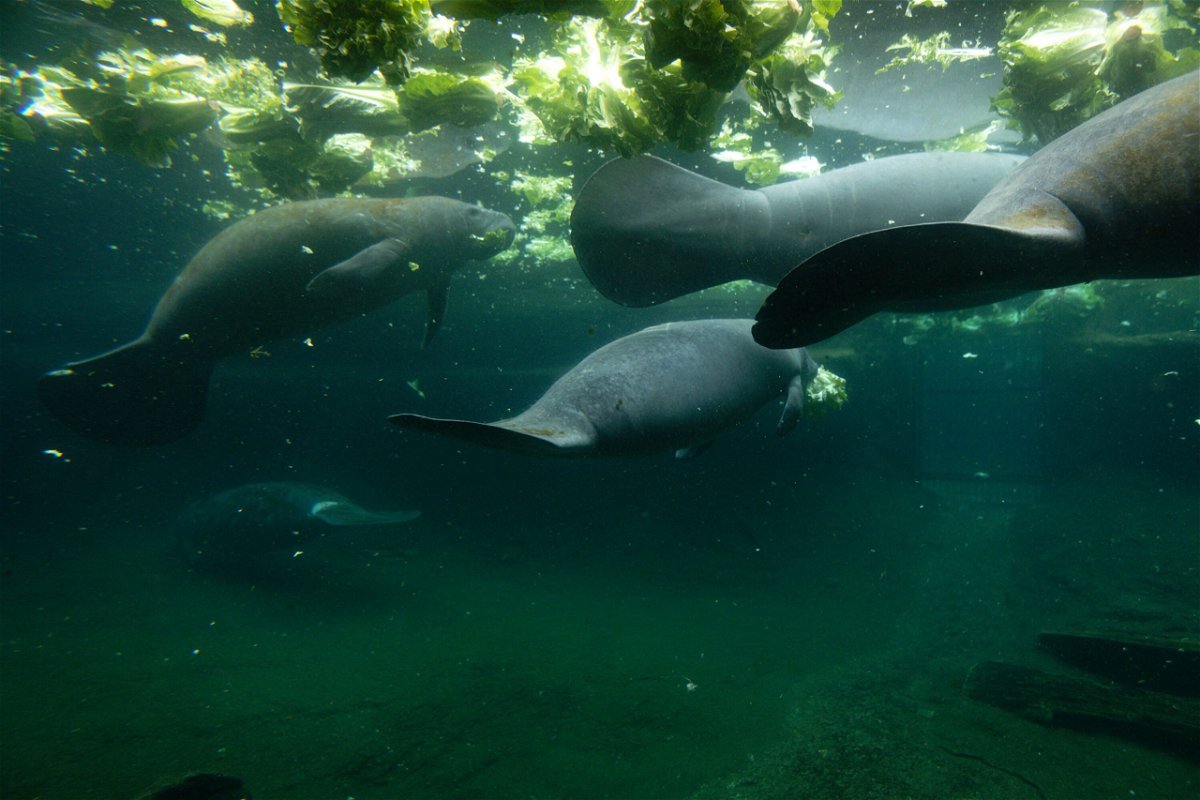More manatees have died in the first half of 2021 than in any other year in Florida’s history, wildlife agency says

Manatees feed in a recovery pool at ZooTampa at Lowry Park in Tampa
By Scottie Andrew, CNN
A grim prediction for Florida’s manatees has come to pass: More manatees have died in the first half of 2021 than ever before in the state’s recorded history.
At least 841 manatees have died between January 1 and July 2, surpassing the previous record of 830 total manatee deaths in 2013, the Florida Fish and Wildlife Conservation Commission (FWC) reported this month.
The increase in deaths is extreme. It’s more than twice the number of deaths recorded just one year earlier: 354 manatees died in the same period in 2020 (while a total of 637 died over the course of the entire year), according to the FWC.
The record die-off constituted an “unusual mortality event,” or a sudden surge in deaths of a species. This year’s die-off was primarily due to starvation, with a spike in boat strike deaths in the summer, the FWC said in its most recent manatee mortality report.
Most of the deaths occurred in the Indian River Lagoon, a well-tread winter home for manatees in the state that links to the Atlantic Ocean. But what was once a bustling estuary that spanned more than 150 miles of seagrasses is now a polluted system where nearly 60% of seagrasses, the primary food source of manatees, have died, according to the St. Johns River Water Management District, a regulatory agency that oversees the Indian River Lagoon.
A healthy manatee should eat 10% of its body weight per day, so for a 1,000-pound manatee, that means 100 pounds of seagrass. Without an ample seagrass supply, manatees can become malnourished and eventually starve to death.
Once the Atlantic Ocean’s waters warmed up in spring, this year’s starvation deaths declined as the manatees dispersed instead of staying in crowded areas with low seagrass, the FWC said.
But in June, watercraft-related injuries replaced starvation as the leading cause of manatee deaths, the FWC reported. In a typical year, boat collisions cause around 20% to 25% of all manatee deaths.
This year, in general, has been far from typical. Seagrasses will continue to die if their source of sunlight is shaded out by toxic algal blooms, which can cause manatees to overgraze the same patches of grass and prevent it from regrowing, manatee researchers told CNN in May.
There are around 7,500 manatees in Florida, according to the FWC, though other population counts by the US Fish and Wildlife Service and the nonprofit Save the Manatee Club have ranged between 5,700 to 6,300 (those figures don’t include this year’s deaths). If they continue to die in such high numbers each year, manatee experts fear the species could decline to near-extinction levels in the 1970s, when just a few hundred remained.
The-CNN-Wire
™ & © 2021 Cable News Network, Inc., a WarnerMedia Company. All rights reserved.